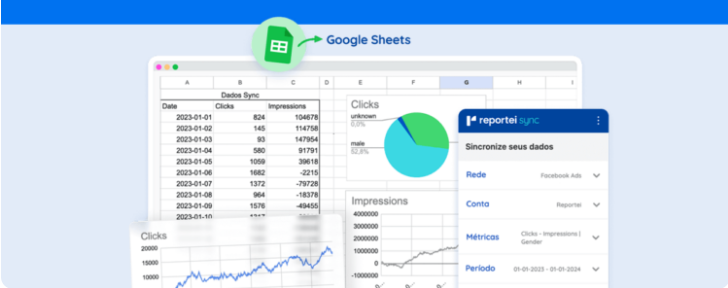Follower history is data that shows how strong your profile’s presence is. Check out some of the ways you can track this metric!
When it comes to social networks, some primary client concerns are profile growth and monitoring follower history (especially Instagram).
That means closely following the number of users an account reaches and their engagement with content. Because reach is, after all, a metric that gives you an overall assessment of how profiles are performing in reaching target audiences, right?
But does it really give you a detailed history of your Instagram followers? And how can analysts gain access to that data?
In this article, we’ll disclose what you need to know about follower metrics and cover a few practical ways of tracking your profile’s development. Keep reading and check it out!
Can you track follower history through Instagram Insights?
You must have already heard of Instagram Insights. It’s the analytics tool of the largest social network in the world for photos.
The platform is available for commercial accounts and allows brands and content producers to use their profiles to access a wide range of metrics, like reach, engagement with content, and audiences.
However, while you can view your account follower number and demographic info, Instagram Insights doesn’t provide a detailed follower history.
The only way to track that data over time through Instagram Analytics is by recording it manually. And that can be time-consuming for analysts because it requires so much work.
How to generate follower history reports
The good news is although you can’t use Instagram Analytics to track your follower history over time, there are other platforms that can help you tremendously, like Reportei, for example.
Integrating your Reportei account into your professional Instagram profile lets you access metrics with your Instagram Insights data. You can also make relevant comparisons between periods, as you’ll see below.
But first, here’s one thing to keep in mind. Instagram won’t save follower history to your profile. You’ll only be able to build it up after integrating Instagram and Reportei. So, we don’t recommend integrating your account while generating your first report. That said, let’s talk about follower history.
Number and variation of followers
The number of followers is one of the first metrics you’ll see after generating a report. When choosing an analysis and comparison period (if you have other periods to compare), Reportei displays reliable data on your current numbers up until that point. That makes it easy to gauge your profile growth (or lack).
Another metric is follower variation, which shows the number of followers your account has gained and lost between chosen analysis periods. You can also compare that data with the previous period.
Follower growth over time
Reportei lets you track follower history through a Follower growth graph, which displays the evolution of your profile over a chosen analysis period.
This graph sits under the two first metrics we covered above, where you can view the curves of follower growth or drop over time.
What other Instagram history data can I access through Reportei?
Besides follower history, Reportei also delivers detailed reports on the reach and engagement of your profile.
You can access account impressions, views, interaction with your profile and content, and posts that were the most successful with your audience within a particular period or between periods. That makes a world of difference in helping you produce relevant content for your followers.
And speaking of followers, you can also analyze other graphs and data on your audience (age, gender, locations and cities, and user behavior such as ideal days and times to post).
Not only do we have feed post metrics for Instagram, but also for Reels and Stores data.
Start using our tool right now to generate reports on your Instagram follower history and engagement!



